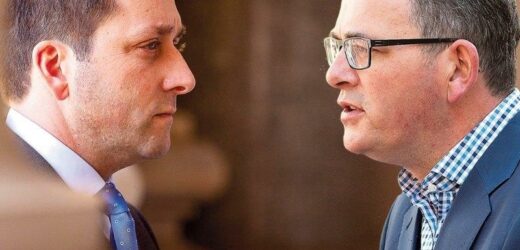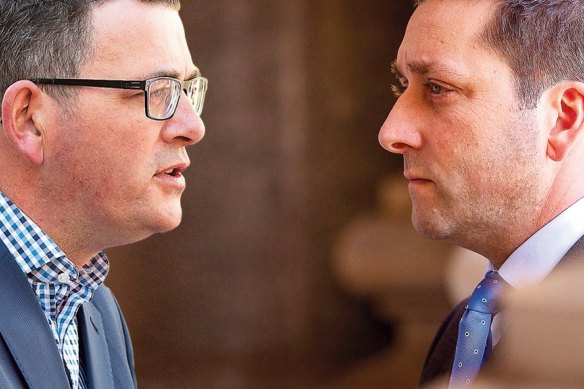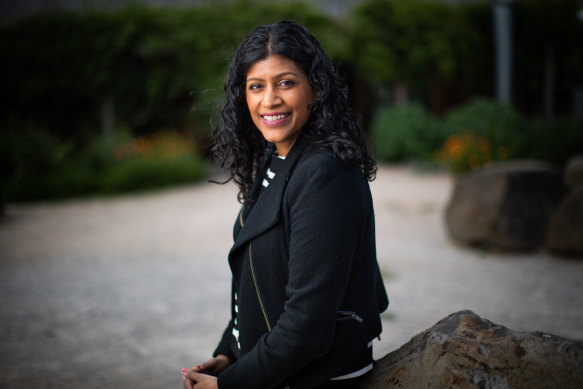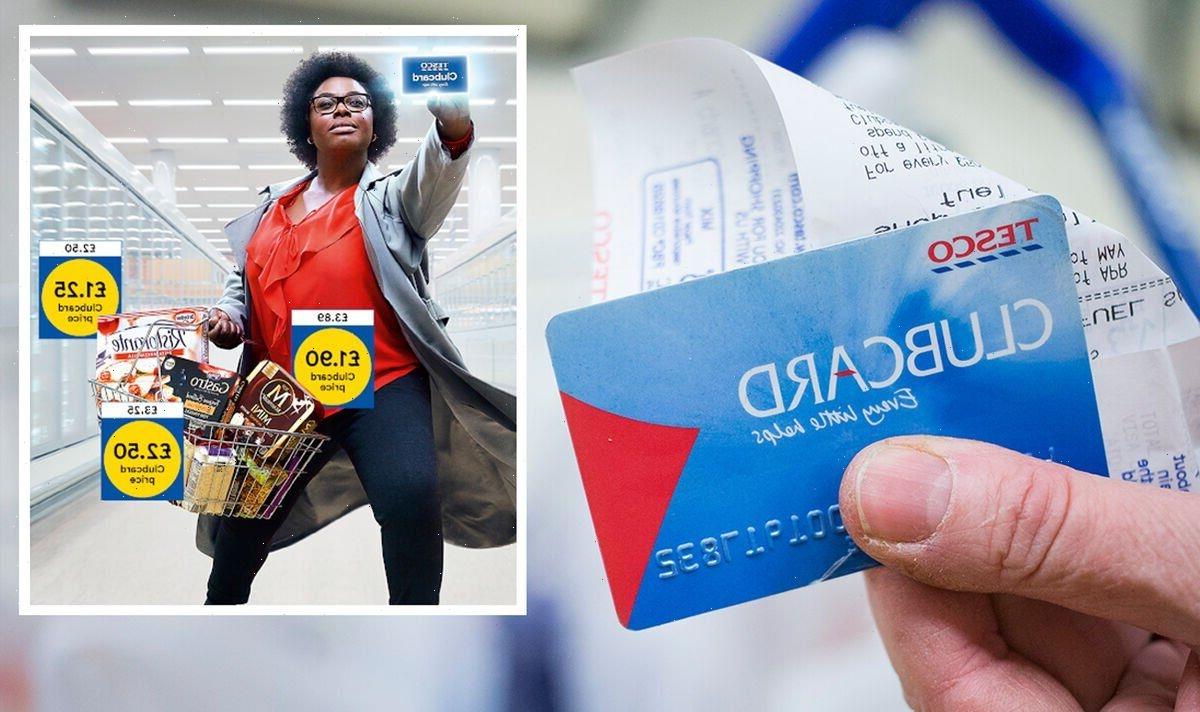With 100 days to go, the Victorian election is Labor’s to lose.
The Andrews government retains an election-winning lead over the Coalition, but there remains a real risk Labor will be unable to govern in its own right after polling day.
Daniel Andrews and Matthew Guy will battle it out during the next 100 days before the state election.Credit:Fairfax Media
That’s the assessment of pollsters, party insiders and academics ahead of November’s state election in which Daniel Andrews’ government will ask Victorians for a third term in office – a rarity in modern politics.
The most recent Resolve Political Monitor from April shows the government’s primary vote has fallen almost six points since it won the 2018 state election with a landslide 43 per cent. This is consistent with internal party polling, which paints a worrying picture for the government.
Former Labor strategist Kos Samaras, who is now the director of strategy and campaigns at RedBridge Group, said he expected there to be an overall swing against the government of about 4 to 5 per cent, but it was unlikely to cost Labor the election.
Labor insiders said it was “inevitable” they would lose some support from the high benchmark set at the 2018 poll, driven in part by dissatisfaction with the government’s COVID-19 response, which has supercharged a weariness voters naturally feel towards any long-term government.
This is in addition to Victoria’s worsening health crisis, rising cost-of-living pressures and integrity scandals that have dogged the Labor government recently.
Monash University associate professor Paul Strangio said the public often had a “healthy instinct” to change governments when they thought the incumbent’s time was up. He pointed to the “stunning swings” Labor suffered in Melbourne’s outer suburbs in the May federal election as a sign the party had lost support in traditional heartland seats.
In the federal seat of Scullin, frontbencher Andrew Giles’ primary vote fell by 14 per cent, which could affect the state seats of Mill Park and Thomastown. Similarly, in the federal seat of Calwell, Labor’s primary vote fell by more than 9 per cent, potentially hurting Labor’s vote in Yuroke and Broadmeadows.
Strangio said while such swings might “strike at the psychology of Labor”, the large margins in those electorates would probably protect the government from suffering any significant loss.
Seats to watch
- Richmond: ALP 5.9 per cent: Former Yarra City Council mayor and councillor Gabrielle de Vietri is hoping to capitalise on the retirement of veteran Labor MP Richard Wynne in the inner-city seat. The Greens are buoyed by the party’s recent success at the May federal election and hope to win the key lower house seat that also includes the suburbs of Fitzroy and Clifton Hill.
- Melton: ALP 5.8 per cent: Party strategists believe the once-safe Labor seat of Melton in Melbourne’s outer-west could fall to an independent off the back of growing dissatisfaction with the major parties fuelled by COVID lockdowns and cost-of-living pressures. In 2018, Labor recorded a statewide 5 per cent swing in its favour, but in Melton, there was a 7 per cent swing to the Liberal Party. The Liberals have preselected former Burwood MP Graham Watt.
- Hawthorn: ALP 0.4 per cent: The Liberals lost the once-safe seat of Hawthorn in 2018 after suffering a 9.1 per cent swing, handing the seat to Labor for only the second time in the electorate’s history. Labor’s John Kennedy will have to fight to hold on to the marginal seat with a teal independent expected to contest the seat alongside former Liberal MP John Pesutto.
- Pakenham: ALP 3 per cent: A new seat in Melbourne’s south-east fringe is notionally held by Labor but is being targeted by the Liberals. Former Gembrook MP and failed Liberal leadership candidate Brad Battin will take on Emma Vulin, a CFA volunteer who worked in Daniel Andrews’ electorate office.
- Brighton: LIB 0.6 per cent: Liberal frontbencher James Newbury, who narrowly won Brighton in 2018, will have a fight on his hands to retain the once-safe Liberal seat. Boundary changes have halved his already narrow margin going into the election. He is also expected to be challenged by a teal independent off the back of Zoe Daniel winning the overlapping seat of Goldstein in May.
Labor cabinet ministers, speaking to The Age on the condition of anonymity, are quietly confident they will form government after the election but fear Labor could be pushed into minority, requiring the support of the Greens and possibly inner-city independents.
Such a scenario might leave the Coalition in opposition for another four years but could be a gift to the Liberals if a hung parliament forces Labor to spend more time negotiating than governing.
Labor would need to lose 11 of its 55 seats to fall into a minority position in the 88-seat parliament. Founder of Resolve Strategic Jim Reed, who conducts the Resolve Political Monitor for The Age, said he was detecting an uptick in support for candidates not aligned to the major parties.
“Folk on the ground are talking about being sick and tired of the major parties,” he said.
Reed agreed that the election was Labor’s to lose, but believed Andrews would prove a weakness for Labor on polling day, as disgruntled Victorians appeared willing to punish the premier for his COVID-19 response.
“Andrews has barnacles on his hull, but it’s hard to see him sinking,” he said.
Reed’s view, that a majority Coalition government is unlikely after November 26, is based on the opposition’s diminished position following the 2018 election that saw it hold just 27 seats in the legislative assembly. To win outright, the Coalition would need a net gain of 18 seats.
Reed’s most recent Victorian survey showed a slight improvement in the Coalition primary vote, which edged up to 33 per cent. Labor campaigners were wary that the momentum was shifting the opposition’s way.
What is different about this election?
- Buoyed by the federal election result, teal independents are expected to run in five inner-city seats, the majority of which are represented by Liberals.
- Strategists believe COVID-19 has prematurely aged the government, with incumbency no longer protecting political leaders as it did at the height of the pandemic.
- Pollsters say rising interest rates, falling house prices and inflationary pressures have put cost-of-living pressures at the front of voters’ minds.
- The Greens will target three inner-Melbourne seats, forcing Labor to sandbag city seats while wooing traditional supporters in outer-suburban areas.
- By polling day, Labor will have been in power in Victoria for 19 of the past 23 years and is asking for another term.
But recent revelations that Opposition Leader Matthew Guy’s chief of staff requested a donor make more than $100,000 in payments to his private marketing business has robbed the party of authority to campaign on integrity.
Adding to its woes, the Coalition will enter the election race in a worse position than in 2018, with a redrawing of the electorate boundaries notionally snatching two seats from the party. Also, of the 20 seats notionally held by the Liberals, 15 electorates have a margin of 5 per cent and are therefore considered marginal.
Strangio believes the Coalition’s best option is to paint the Andrews government as tired after eight years in office and distance itself from the broader federal brand.
“There will be an ‘it’s time’ factor in the mind of voters, particularly after such an in-your-face period of governance,” he said.
This is consistent with the opposition’s own research, which shows many Victorians are looking for fresh faces to lead the state and don’t wish to be reminded of the seemingly endless lockdowns of 2020 and 2021.
That sentiment is likely to help Guy, but the opposition has also been handed meaty policy issues, such as health and cost of living, on which to campaign.
The challenge for Guy is how he woos voters in outer-suburban areas – many of whom will have never voted Liberal – while holding on to inner-city seats under threat from independent candidates campaigning on integrity and climate.
Inspired by the strong performance of the “teal” independents in the federal election, particularly in metropolitan seats where the Liberals have traditionally performed well, community groups linked to the successful federal Kooyong and Goldstein campaigns have started handpicking independent candidates to contest the Liberal seats of Sandringham, Brighton, Caulfield and Kew, and the Labor seat of Hawthorn.
Victorian Greens leader Samantha Ratnam believes the party has a strong chance of winning three Labor-held seats.Credit:Jason South
Recent polling commissioned by Climate 200, which funded the teals in May, shows progressive independent candidates would receive strong support in all five seats.
Anticipating this, the Coalition recently announced a suite of climate change policies, including a pledge to halve emissions by 2030 and legislate the reduction target.
Despite the sweetener, Strangio said the Liberals were likely to concede some ground to independents in inner-Melbourne.
He said that while climate change was “a big vote turner” in the federal election, he did not expect it to have the same impact in a state election. “But the issue of integrity remains problematic for both the government and opposition,” he said.
Similarly, the Greens are buoyed by their federal election performance, in which the party successfully convinced Labor and Liberal voters to switch support, particularly in affluent inner-city seats.
Victorian Greens leader Samantha Ratnam believes the party has a strong chance of winning three Labor-held seats: Richmond, which will be vacated by long-serving Labor MP Richard Wynne, Northcote, and Albert Park, where Labor minister Martin Foley is retiring.
Winning these seats would boost the party’s lower house count to six and potentially hand the minor party the balance of power.
Regardless of the result, pollsters and strategists from across the political spectrum believe the election will deliver a fundamental realignment of the Victorian electorate, with both major parties expected to suffer swings in heartland seats.
“More than ever, this will be a seat-by-seat proposition where we are going to have a situation that looks like a lot of different byelections, more than general elections,” Samaras said.
Labor insiders said large swings against the party in outer-suburban seats would force the ALP to pour resources into once-safe working-class electorates such as Narre Warren North, Pakenham and Melton, while trying to simultaneously fend off the Greens in Richmond, Northcote and Albert Park.
“In economically precarious electorates, [that] will be where Labor gets in trouble,” Samaras said.
Cut through the noise of federal politics with news, views and expert analysis from Jacqueline Maley. Subscribers can sign up to our weekly Inside Politics newsletter here.
Most Viewed in Politics
From our partners
Source: Read Full Article



